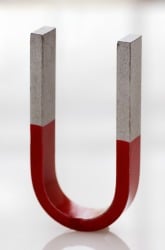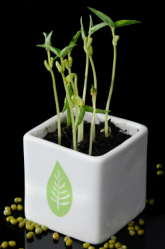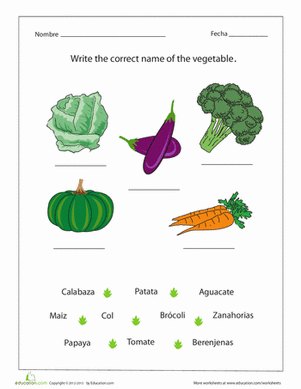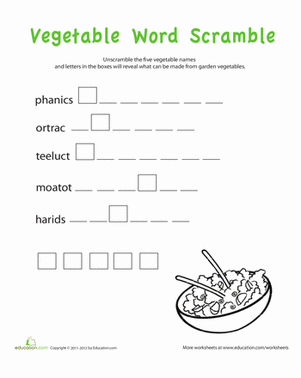Science project
The Effect of Irradiation on Vegetables
Difficulty of Project
Medium
Cost
$20 - $30
Safety Issues
Wear safety glasses, apron and plastic gloves.
Material Availability
Irradiated seeds are readily available from Carolina Biological Supply Company and other supplies may be obtained from local gardener`s center.
Approximate Time Required to Complete the Project
One month. This includes experimentation, collection, recording and analysis of data, summary of results and completion of bibliography.
Objective
To determine the effect of irradiation on the germination and growth of vegetables such as the tomato plant. Will the seeds germinate faster and will the tomatoes be larger?
Materials and Equipment Required
- 8 plastic cups
- vermiculite
- soil
- irradiated tomato seeds
- regular tomato seeds
- paper towels
- labels
- a pencil
- water
- a watering can
- a metric ruler
- data chart
Introduction
Background Information
On the information level, this experiment serves to acquaint students with current information on the effects of irradiation on the germination and growth of vegetables. Students will learn that irradiation is a process of exposing fruits, vegetables and numerous other foods to gamma and other types of radiation. In many cases the purpose is to remove harmful bacteria as well as pathogens. To date, there has been little agreement as to the benefits derived from this process. This is an area in which further research is required and welcomed.
This science fair experiment also serves to acquaint students with the essential processes of sciencing such as the importance of the use of a control, of identifying dependent and independent variables, of data collection, of pictorial and or graphic presentation of data and of being able to make better judgments as to the validity and reliability of their findings. They take on the role of scientists and in the process they learn to act as one.
Research Terms
- irradiation
- alpha particles
- beta particles
- gamma rays
- gamma decay
- radioactivity
- nuclear decay
- radio isotope
- radiation
Research Questions
- What is radiation?
- What is irradiation?
- What are the three major types of radiation?
- What are beta particles?
- What is gamma decay?
- What is the radiation absorbed dose?
- What are the benefits of irradiating vegetables and other foods?
- What are the risks in irradiating foods?
Terms, Concepts and Questions to Start Background Research
- What is a control? A control is the variable that is not changed in the experiment.
- What purpose does a control serve? It is used to make comparisons as to what changed or possibly caused the change.
- What are variables? Variables are factors that can be changed in an experiment.
- What is an independent variable? The independent variable is the one that is changed in the experiment.
- What is a dependent variable? The dependent variable is the one that changes as a result of the change in the independent variable.
Experimental Procedure
- State the problem you are going to investigate in this science fair project.
- Create and reproduce the data sheets you will use to record your observations.
- Order both the irradiated tomato seeds and the regular tomato seeds from Carolina Biological Supply. Gather all your materials.
- Put on your safety glasses, plastic gloves and apron.
- Gather all the materials: 8 plastic cups, vermiculite, soil, irradiated tomato seeds, regular tomato seeds, paper towels, labels, a pencil, and water, a watering can a metric ruler and the data chart.
- Begin by making a mixture of soil and vermiculite, 50% of each. Label each of the 8 plastic cups, 4 with irradiated seeds and 4 with regular seeds.
- Fill ¾ th of each of the 8 plastic cup with the mixture. Water the mixture. Do not soak!
- Using your pencil to make a dent, about 1/8th”deep, plant three seeds in each of the containers as noted on the label. Firm the soil around each one. You will have 4 containers each containing 2 irradiated seeds and 4 containers each having 2 regular seeds. You may wish to place a sample of each kind of seed in a small plastic bag, label each and use it for display purposes or include it in your final report. The rationale for using 8 “plants” is to safeguard your experiment in case some of your specimens die.
- Now place all of the 8 containers in direct sunlight. Water them gently on a daily basis. It should take between 7 to 10 days to germinate. You may wish to take photos of the plants as they emerge. Observe them on a daily basis. At the end of each week summarize the data and record the results on your chart. Using a metric ruler, make measurements of increments in growth of all 8 containers. If there is no growth, please note that to be the case.
- At the end of three weeks, review all of your data, finalize your conclusion and prepare your report Include all of the following: a clear statement of the problem, your hypothesis, namely what did you predict would occur, and a list of the materials used. Include the safety precautions taken. Describe the procedures used. Include all the data that were gathered. Include all charts. Explain what constituted the control and what purpose it served. For dramatic value, you may include photos of the materials used or of you in the process of conducting this investigation. Focus on the differences you observed between the irradiated tomatoes and the non -irradiated tomatoes. Include a bibliography of sources you used. You may wish to assess what you did and describe what you would do differently if you were to do this project again. You may wish to expand this research next year. What other vegetables or foods might you investigate for this purpose?
Charting and or Graphing Data
In each section of the experiment, use charts to display the obtained data such the following sample:
Chart of Growth Observations
RS=radiated seeds NRS= non-radiated seeds Specimens
|
Specimens |
Week#1 |
Week#2 |
Week#3 |
|
RS1 |
|
|
|
|
RS2 |
|
|
|
|
RS3 |
|
|
|
|
RS4 |
|
|
|
|
NRS1 |
|
|
|
|
NRS2 |
|
|
|
|
NRS3 |
|
|
|
|
NRS4 |
|
|
|
Bibliography
- Grahame W. Gould, New Methods of Food Preservation
- Albert Towle, Modern Biology, Holt, Rhinehart & Winston
Education.com provides the Science Fair Project Ideas for informational purposes only. Education.com does not make any guarantee or representation regarding the Science Fair Project Ideas and is not responsible or liable for any loss or damage, directly or indirectly, caused by your use of such information. By accessing the Science Fair Project Ideas, you waive and renounce any claims against Education.com that arise thereof. In addition, your access to Education.com's website and Science Fair Project Ideas is covered by Education.com's Privacy Policy and site Terms of Use, which include limitations on Education.com's liability.
Warning is hereby given that not all Project Ideas are appropriate for all individuals or in all circumstances. Implementation of any Science Project Idea should be undertaken only in appropriate settings and with appropriate parental or other supervision. Reading and following the safety precautions of all materials used in a project is the sole responsibility of each individual. For further information, consult your state's handbook of Science Safety.













